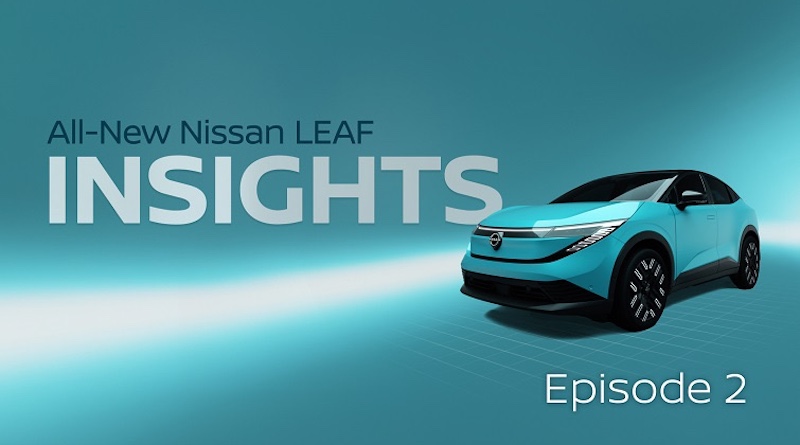In the second installment of the LEAF Insights video series, Nissan Motor Co., Ltd. today divulges details of the third-generation LEAF’s enhanced suspension and maneuverability, improved heat regeneration features and quieter, more refined cabin.
Richard Candler, Vice president global product strategy said “The all-new LEAF delivers a responsive, smooth and confident drive. All elements have been optimized to support efficiency.”
The all-new LEAF is the first model to adopt Nissan’s all-new, 3-in-1 electric powertrain, which is 10 percent smaller than the motor used in the outgoing LEAF and offers up to 160 kW (214 hp) power and 355 Nm (261 ft-lb) of Torque on selected variants.

Furthermore, improvements in noise and vibration ensure a quieter, more refined cabin. At urban speeds of 50 km/h (~31 mph), the interior of the all-new LEAF is up to 2 decibels quieter than the already hushed second-generation model.
With the compact powertrain, Nissan engineers positioned the HVAC (Heating, Ventilation, and Air Conditioning) unit under the hood, rather than behind the instrument panel. The result is a more spacious, open feeling within the cabin.
The all-new LEAF also benefits from a multi-link rear suspension system with a 66 percent increase in lateral stiffness. Combined with the CMF-EV platform and a more rigid body structure, the all-new LEAF delivers enhanced agility and improved ride comfort.
Despite the larger available 19-inch wheels, the all-new LEAF achieves up to 0.1-meter (3.94-inch) improvement in turning radius, enhancing maneuverability in urban environments. This improvement is facilitated by an upgraded rack electronic power steering system, resulting in a minimum turning radius of 5.3 meters.

Chief Vehicle Engineer Hiroki Isobe’s team in Atsugi, Japan, oversaw the development and said “The top priority for our engineering team was optimizing thermal management and never wasting energy. We even capture the heat produced by the on-board charger to warm up the battery.”
In support of this goal, the newly adopted liquid-cooled batteries employ a new thermal recovery system which harvests heat produced by the On-Board Charger (OBC) to warm the battery, enhancing regeneration potential in cold weather.
The system helps maintain optimal battery performance and conserves energy to potentially extend range.

Combined, the new powertrain, advanced thermal recovery system, upgraded platform and enhanced rear suspension deliver a smooth, refined and confident drive.
Stay tuned for the third and final installment of the series.

Sign up for CleanTechnica’s Weekly Substack for Zach and Scott’s in-depth analyses and high level summaries, sign up for our daily newsletter, and follow us on Google News!


Whether you have solar power or not, please complete our latest solar power survey.
Have a tip for CleanTechnica? Want to advertise? Want to suggest a guest for our CleanTech Talk podcast? Contact us here.
Sign up for our daily newsletter for 15 new cleantech stories a day. Or sign up for our weekly one on top stories of the week if daily is too frequent.
CleanTechnica uses affiliate links. See our policy here.
CleanTechnica’s Comment Policy

